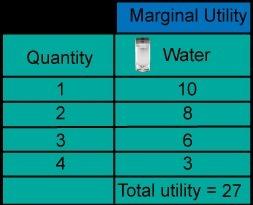
Business, 29.03.2021 20:40 hunterbesch03
Which statement is FALSE: In the model with one risk-free asset and only one risky asset: The slope of the CAL (Capital Allocation Line) is the Sharpe ratio of the risky asset The CAL shows all possible complete portfolios that can be constructed from the two assets An investor can have more than 100% weight in the risky asset by borrowing money (in which case their portfolio will have a negative weight on the risk-free asset) The Sharpe ratio of an investor’s complete portfolio will depend on the weight in the risky asset

Answers: 3
Another question on Business

Business, 21.06.2019 16:30
What comprises a list of main points and sub-points of a topic to include in a presentation
Answers: 2

Business, 22.06.2019 02:00
What is the main role of ctsos at the local level? at the local level, the main role of ctsos is to encourage students to become urge them to programs and competitive events.1. a.internsb.traineesc.members2.a.participateb.trainc.win
Answers: 3

Business, 22.06.2019 03:20
Yael decides that she no longer enjoys her job, and she quits to open a gluten-free, dairy-free kosher bakery. she pays a monthly rent for her store of $2,000. her labor costs for one month are $4,500, and she spends $6,000 a month on nut flours, sugar, and other supplies. yael was earning $2,500 a month working as a bank teller. these are her only costs. her monthly revenue is $14,000. which of the following statements about yael’s costs and profit are correct? correct answer(s) an accountant would say she is earning a monthly profit of $1,500. her implicit costs are $2,500 a month. an economist would tell her that she is experiencing a loss. her total costs are $12,500 a month. her explicit costs include the labor, rent, and supplies for her store. her economic profit is $1,500 a month.
Answers: 3

Business, 23.06.2019 00:00
1. consider a two-firm industry. firm 1 (the incumbent) chooses a level of output qı. firm 2 (the potential entrant) observes qı and then chooses its level of output q2. the demand for the product is p 100 q, where q is the total output sold by the two firms which equals qi +q2. assume that the marginal cost of each firm is zero. a) find the subgame perfect equilibrium levels of qi and q2 keeping in mind that firm 1 chooses qi first and firm 2 observes qi and chooses its q2. find the profits of the two firms-n1 and t2- in the subgame perfect equilibrium. how do these numbers differ from the cournot equilibrium? b) for what level of qi would firm 2 be deterred from entering? would a rational firm 1 have an incentive to choose this level of qi? which entry condition does this market have: blockaded, deterred, or accommodated? now suppose that firm 2 has to incur a fixed cost of entry, f> 0. c) for what values of f will entry be blockaded? d) find out the entry deterring level of q, denoted by q1', a expression for firm l's profit, when entry is deterred, as a function of f. for what values of f would firm 1 use an entry deterring strategy?
Answers: 3
You know the right answer?
Which statement is FALSE: In the model with one risk-free asset and only one risky asset: The slope...
Questions

Mathematics, 21.04.2020 16:59

Advanced Placement (AP), 21.04.2020 16:59


Mathematics, 21.04.2020 17:00


Physics, 21.04.2020 17:00



Mathematics, 21.04.2020 17:00

Social Studies, 21.04.2020 17:00



Geography, 21.04.2020 17:00



Mathematics, 21.04.2020 17:00

History, 21.04.2020 17:00



Social Studies, 21.04.2020 17:00




